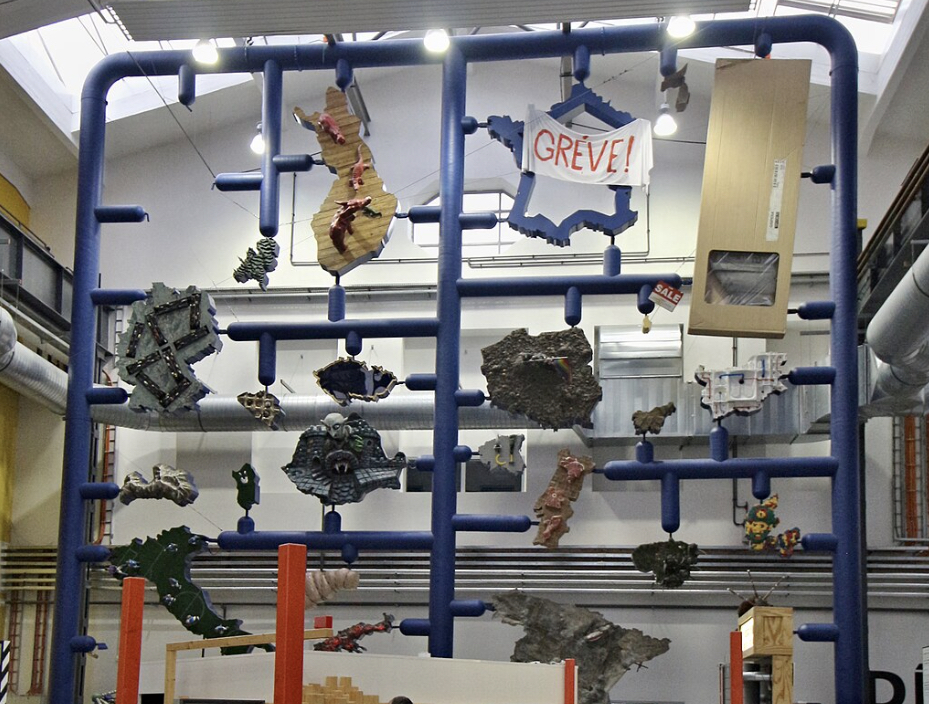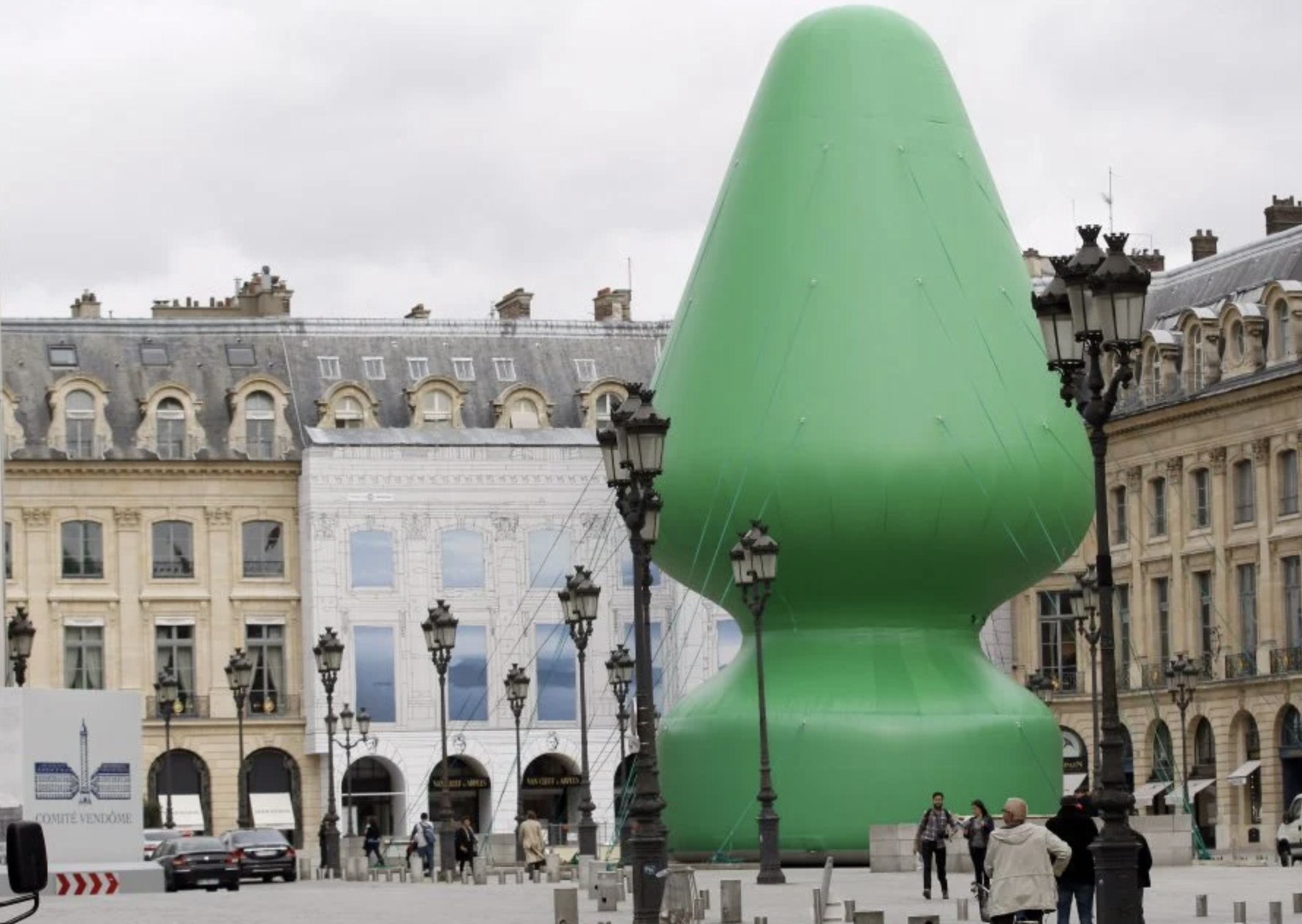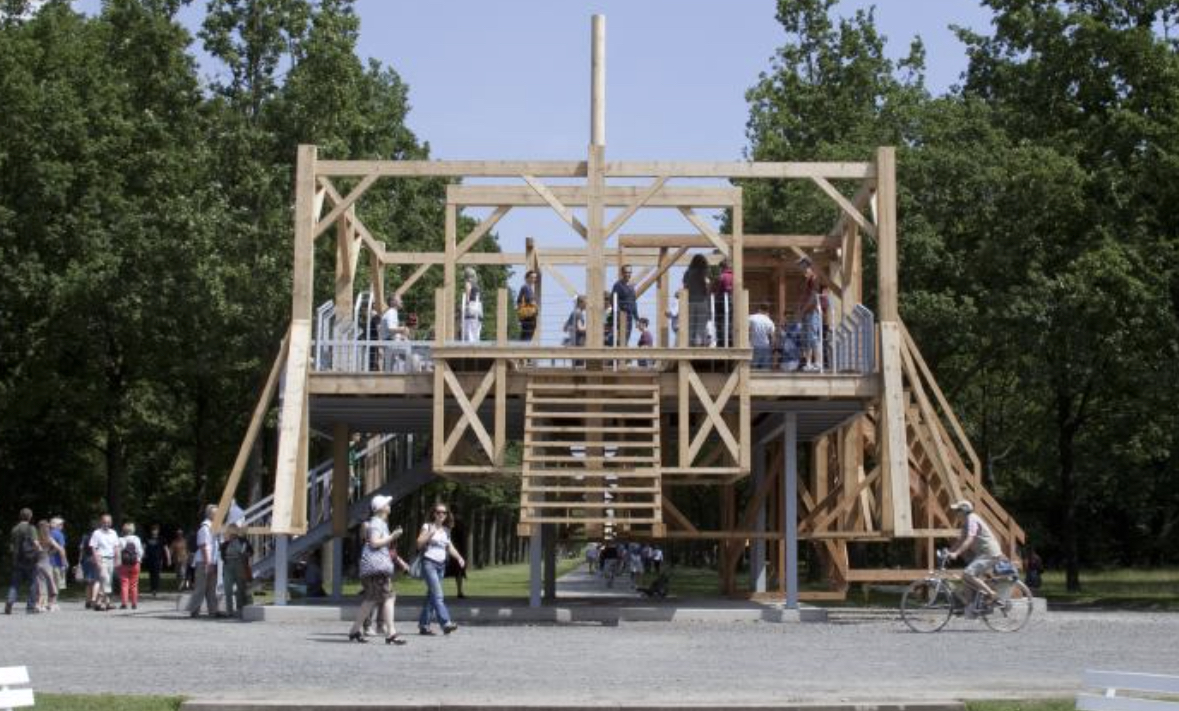Controversial Public Art – Why We Need It & Examples

Controversial public art is an artwork displayed in public spaces that sparks debate and strong reactions due to political or social commentary, graphic content, or violation of cultural norms.
The primary purpose of controversial public art is to challenge societal norms, stimulate dialogue, and encourage critical thinking. It serves as a tool for social commentary, addressing pressing political, social, or cultural issues.
This art can take various forms, including sculptures, statues, murals, digital art, architectural designs, and performances. Some controversial pieces use abstract or geometric shapes that deviate from traditional styles, provoking strong reactions.
Reactions to controversial art vary widely. Some view it as essential to cultural discourse, while others may feel offended or uncomfortable.
Access to controversial public art is crucial as it ignites debate, encourages thoughtful reflection, and elevates voices that are often overlooked. It can also strengthen community bonds by fostering open discussions on complex issues. Moreover, it transforms public spaces into sites of cultural reflection and engagement, encouraging people to reconsider their views.
Governments should collaborate with public art agencies to provide more opportunities for controversial art exhibitions. Such partnerships ensure that these exhibitions are well-curated, legally compliant, and respectful of community values while encouraging free expression.
Initiating public art projects can enrich cultural landscapes and provide a platform for diverse voices, making art an active participant in social change.
Why Is Controversial Public Art Important?
Controversial public art is important because it sparks public dialogue, promotes critical thinking, gives voice to marginalized perspectives, strengthens community engagement, and transforms everyday spaces into sites of cultural reflection.
- A Catalyst for Public Dialogue. Controversial public art disrupts the routine and demands attention by appearing in shared, everyday environments. It tackles sensitive or divisive issues like race, politics, or inequality, encouraging open conversations and often igniting debates that wouldn’t happen otherwise.
- Free Access Means Broader Impact. Public art is available to everyone, regardless of income or background. Unlike museum exhibits that require admission or specific knowledge, public installations are encountered naturally. This accessibility allows more people to engage with the work and its ideas.
- A Voice for the Marginalized. Controversial public art often represents voices ignored or excluded from mainstream narratives. It becomes a platform for marginalized communities to express themselves, challenge power structures, and raise awareness about social justice issues.
- Encouraging Independent Thought. Where museum labels might tell viewers how to interpret a piece, public art leaves interpretation open-ended. This freedom invites people to think for themselves, question assumptions, and reflect on broader cultural and social topics.
- Building Community Through Controversy. Even when a piece divides opinion, it becomes a conversation starter. Supportive and critical public responses can bring communities together in dialogue, helping build stronger civic engagement through shared experiences.
- Redefining Urban Landscapes. Controversial art adds character to public spaces. It turns sidewalks, walls, and plazas into stages for cultural expression, often reshaping how we experience and remember the places we live in.
Unlike controversial artwork displayed in museums, controversial public art lives in the public sphere — accessible to all, without cost or restriction.
Museum exhibitions are curated, contained, and selective. They often attract a narrower audience, both demographically and ideologically. Public art, especially when controversial, operates outside these confines. It invites spontaneous engagement, fosters organic debate, and ensures that conversations about art and society are not limited to those within institutional walls.
Entropa by David Cerny

Scaffold, created by American artist Sam Durant, was installed in 2017 at the Walker Art Center in Minneapolis. The sculpture was a temporary piece, designed as a 45-foot-high wooden structure resembling gallows. It was intended as a reflection on America’s history of racial violence, particularly the 1862 mass execution of 38 Native American men in Minnesota, the largest such execution in U.S. history.
The artwork, made primarily of wood and metal, featured a series of scaffold-like platforms connected by ropes, alluding to the image of public executions. The installation, however, was highly controversial, particularly because it represented a dark chapter in American history. The public reaction was sharply divided — while some praised it as an important commentary on racial injustice, others, particularly Native American groups, saw it as insensitive and disrespectful.
The controversy deepened when the art was temporarily removed after protests from local Native American communities, who felt that the piece trivialized the pain and trauma associated with the executions. Critics argued that the artwork had a dangerous potential to re-traumatize survivors and descendants of the victims.
In response to the criticism, the Walker Art Center ultimately decided to dismantle the piece, acknowledging the harm it had caused. Scaffold became a powerful example of how public art can challenge societal narratives and backfire if not handled with care and cultural sensitivity.
Tree by Paul McCarthy

Tree, created by American artist Paul McCarthy, was installed in December 2014 at Place Vendôme in Paris, a historic square known for its classical architecture and luxury boutiques. The sculpture was part of a temporary exhibition to challenge traditional perceptions of public monuments.
The installation is a massive inflatable sculpture measuring over 24 meters (80 feet) tall. Made of PVC material, it features a distorted, cartoonish Christmas tree in bright green with exaggerated proportions and a surreal star on top. The piece’s glossy and bulbous appearance amplified its playful yet unsettling nature.
Tree became controversial due to its stark contrast with the classical elegance of the surrounding area. Critics argued it was an eyesore, clashing with the prestige of Place Vendôme. Some found the inflated design vulgar, while others felt it was in poor taste, especially in such a refined setting.
The work also sparked debate about commercialization and the role of public art, ultimately highlighting the tensions between high culture and contemporary, provocative artistic expression.
Dirty Corner by Anish Kapoor

Dirty Corner, created by British-Indian artist Anish Kapoor, was unveiled in 2015 at the Château de Versailles in France. It was part of a series of contemporary art exhibitions staged in the historic palace gardens, challenging the traditional setting with bold, modern art.
The sculpture is a large, funnel-shaped steel structure, 12 meters long and 4 meters high. Made from raw, untreated steel, it intentionally rusts over time, contributing to its “dirty” aesthetic. The sculpture’s open, cavernous design invites viewers to look inside, enhancing its provocative nature and creating a sharp contrast with the refined surroundings.
The controversy surrounding Dirty Corner stemmed from its stark contrast to the classical beauty of Versailles. Critics saw its industrial design as a violent disruption, while others interpreted its form as having sexual and political connotations. Its defacement with graffiti further amplified its divisiveness, making it one of the most debated pieces in contemporary public art.
Fearless Girl by Kristen Visbal

Fearless Girl is a public art installation by Kristen Visbal, unveiled in 2017 in New York City, facing the iconic Charging Bull on Wall Street. The 50-inch-tall bronze statue of a young girl, standing confidently with her hands on her hips, became a symbol of female empowerment and gender equality, especially in corporate leadership.
Placed initially for International Women’s Day, the investment firm State Street Global Advisors commissioned the statue to promote gender diversity in corporate boards. Fearless Girl was a temporary installation, but its popularity led to its relocation near the New York Stock Exchange in 2018.
Despite its widespread acclaim, Fearless Girl sparked controversy due to its corporate origins. Critics argued that using the statue for an ad campaign diluted its message of empowerment, turning it into a marketing tool.
Additionally, some saw the statue’s placement facing the Charging Bull as an oversimplified depiction of gender equality, potentially trivializing women’s complex business challenges.
Scaffold by Sam Durant

Scaffold is a public art installation by American artist Sam Durant, unveiled in 2017 at the Walker Art Center in Minneapolis, Minnesota. The sculpture consists of a large, 20-foot-tall wooden structure resembling a gallows made from reclaimed wood and steel.
The piece’s design incorporates elements of scaffolding, a symbol of both construction and destruction and was a reference to the history of the 1862 Dakota War and the mass execution of 38 Dakota men, the largest such execution in U.S. history.
The installation aimed to provoke thought about the complex history of race, power, and colonialism in America. Scaffoldwas intended as an exploration of the cultural and historical legacies of violence. The sculpture’s size and striking visual presence were meant to generate conversation about the trauma caused by such historical events.
Scaffold quickly became controversial due to its deeply unsettling subject matter and its presentation in a public space. Many members of the Dakota community, who are directly impacted by the historical event the piece references, found the sculpture offensive and insensitive. They argued that the artwork was an inappropriate representation of a painful chapter in their history, particularly in a public, tourist-heavy setting.
In response to the backlash, the Walker Art Center dismantled the sculpture shortly after its unveiling, acknowledging the harm caused and the importance of consulting communities directly impacted by the artwork’s subject. This controversy raised broader questions about the role of artists in addressing sensitive historical issues and the potential harm caused when art is created without thorough consideration of its cultural and emotional implications.
How to Properly Initiate a Controversial Public Art Installation in Your Area?
To properly initiate a controversial public art installation, focus on understanding the context, planning thoroughly, ensuring safety, managing controversy, and evaluating the impact.
Addressing these key factors can ensure a smoother implementation and meaningful community engagement while reducing potential conflicts.
- Understand the Context. Research the local community’s history, values, and sensitivities to ensure the artwork meets local expectations. Evaluate existing public art to gauge how similar works have been received. Familiarize yourself with legal requirements, including permits and safety regulations. Identify affected groups and involve them early for better acceptance.
- Plan and Prepare. Plan and prepare by defining the artwork’s concept and goals. With the help of an experienced art agency, select an artist skilled in public installations. Budget carefully, including materials and permits. Engage the community through discussions to gather input, build support, and ensure relevance.
- Ensure Safety and Manage Installation. Coordinate the installation process to prioritize safety, minimizing disruptions to the public. Install clear signage explaining the artwork’s concept and the artist’s intentions. Maintain communication with the community during the installation phase, addressing any concerns or questions. Plan a media strategy to handle potential backlash or controversy.
- Manage Controversy. Anticipate negative reactions and prepare a response plan. Encourage open, respectful dialogue with those who may oppose the artwork, listening to their concerns and responding constructively. Ensure transparency by clearly communicating the project’s purpose, funding sources, and decision-making process. Consult legal experts to manage potential legal challenges or risks.
- Evaluate the Impact. Assess the public’s reception of the artwork post-installation, evaluating its impact on the community. Use feedback to gauge the piece’s success and identify improvement opportunities. Learn from the process to refine future public art installations and ensure better engagement and execution in future projects.
How Can a Public Art Agency Help with a Controversial Art Exhibition?
A public art agency can manage a controversial exhibition by facilitating dialogue, setting clear eligibility criteria, resolving conflicts, addressing legal risks, engaging the community, consulting experts, managing public relations, and ensuring long-term sustainability. MTArt Agency is an excellent example of such a model.
Public art agencies facilitate discussions to ensure diverse perspectives are heard and concerns addressed. They also establish transparent eligibility criteria, ensuring fairness in the selection process. Agencies assist in conflict resolution, helping to prevent misunderstandings between stakeholders.
They also address legal risks by ensuring compliance with regulations and fostering community involvement through input sessions and surveys. By consulting with experts, they navigate complex issues surrounding the artwork. Additionally, they manage public relations by handling media inquiries and ensuring accurate communication.